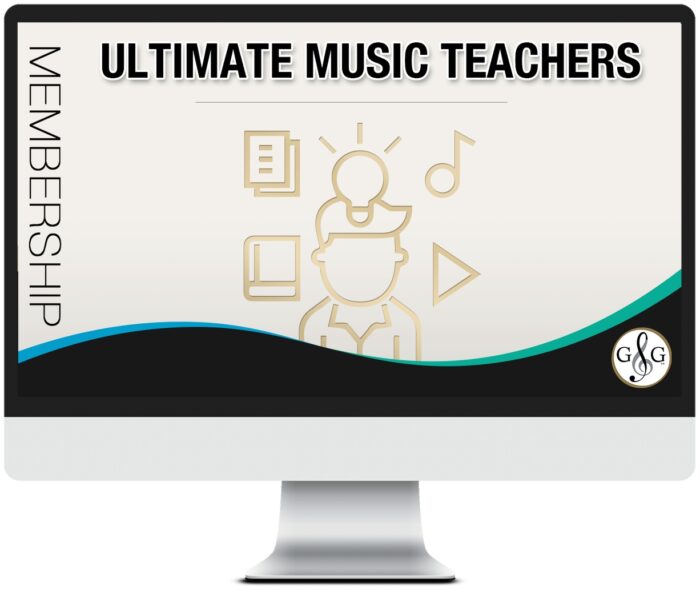Teaching Tips – Theory Learning Circle
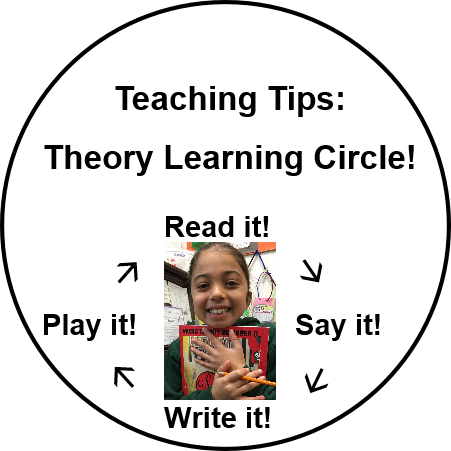
Are you ready to learn how to maximize your Student's learning experience? Want to learn how to make that connection between theory and practical studies? I created what I call the "Theory Learning Circle" in my Studio and WOW, the results are amazing. I am super excited to share these Teaching Tips with you.
There are 4 steps to the Theory Learning Circle:
- Read it.
- Say it.
- Write it.
- Play it.
In this Blog, I will review how I follow each of these steps with my Students and why they are so important for students in all Learning Styles - Visual, Auditory and Kinesthetic. And, if you are not sure what that means, we have Blogs on Learning Styles for you to review too!
Teaching Tips - Theory Learning Circle Step #1 - Read It!
During a typical 30 minute private piano lesson, I usually spend 3 to 5 minutes on Theory. When I need to spend more time at the private lesson on Theory, Ear Training, Sight Reading and Composing, then it is time to increase the lesson length.
Yes, I know that many Teachers will say that Parents won't pay for longer lessons. However, if a Swim Coach or a Hockey Coach says that their child is ready to advance to the next level in swimming or in hockey, AND that it will require longer practice time, better equipment and an increase in the fees, what do you think Parents will say? So, we need to value ourselves. Hmm... I think that I will Blog about that! But let us get back on track!
In order to start the Theory Learning Circle, I will read the opening instructions (paragraph). When we HEAR what we READ, it improves comprehension.
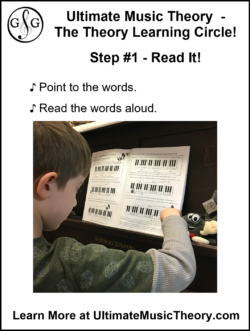
For younger students, I will point to the words and read the words aloud. When we POINT as we READ, it improves tracking skills.
For older students, I ask them to read it aloud to me. This allows me to correct pronunciation, especially on those tricky Italian words.
If you struggle with how to say those words, the Ultimate Music Theory App is a fantastic resource. You will hear the correct pronunciation for all the Music Terms included in the Ultimate Music Theory Workbooks.
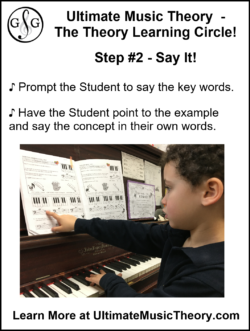
Teaching Tips - Theory Learning Circle Step #2 - Say It!
There are 2 parts to the second step in the Theory Learning Circle.
Say It Part #1: Prompt the student to say the key words back to you.
Say It Part #2: Ask the student to rephrase/explain the concept (and review any other concepts/terms in the instructions - do not assume that the student remembers what each musical "item" is). For young students, have them point to an example of the concept as you Read It and Say It.
So, what does this sound like? After ready each sentence, question the student about it. You may have noticed that, when we wrote the Ultimate Music Theory Workbooks, we kept our sentences short and sweet. Our goal was to write one concept/idea/instructional part per each sentence.
Teaching Tips - Theory Learning Circle Step #3 - Write It!
This is a super easy part of the Theory Learning Circle! Students have to do their written homework along with their practical homework.
For many of my Students, I have them write a few of the answers at the lesson. They then need to finish their writing work at home.
By writing the answer to even one question (or question part) at the lesson, the Teacher is able to ensure that the Student "gets it". If a Student can do it at the lesson, they will feel empowered to do it (finish their theory) at home. Why? Because they know that they already understand how to do it!
When I ask a Student to write an answer, I ask them to read the instructions aloud to me too.
I expect that my Students complete their Theory in pencil (using an eraser if needed) and that they write so that I can read it.
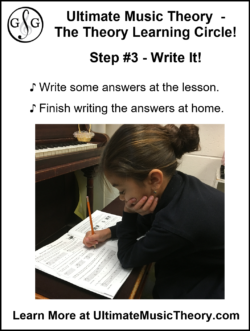
In the Ultimate Music Theory Beginner A, B, C Series, we actually show Students HOW to "write by hand" what they see in their music.
"As seen in music" provides an example of the concept. "As drawn by hand" shows Students what the concept actually looks like when it is written by hand. I remind my Students that we are NOT computers, so we do not need to add all those little frilly things that the computer does!
I have been using these Workbooks with ALL my beginner Students and the results have been amazing. Students love the Workbooks.

Teaching Tips - Theory Learning Circle Step #4 - Play It!
And then....Play It! Students must play their musical answers on the piano. They must clap the rhythms. This is so important. This is the final Theory Learning Circle connection to link Theory with their Practical Studies.
By following this step, Students see, hear and "feel" the connection between what is written on the page and what comes out of their instrument.
So, what does this look like in the Studio? First of all, if there is "music" in the example boxes, we play the music and point out the "example". Then, I like to let my students pick one or two examples/exercises to play for me.
If the Student always picks the "easy" ones, then I challenge them to pick an example that looks easy, and one that looks hard. We then discuss why there is a difference! One benefit to this is having that "That was EASY" moment when they finish playing something that looks hard to them.
Teachers, if you constantly "reach" to point to the music, you run the risk of developing repetitive stress injuries. So, buy yourself an Extendable Whiteboard Pointer and save your shoulders!
I often do not have time to have my students play all their completed theory pages at their lesson. So, here are a couple of Tips:
- If there is an error in a completed question, do not circle it. Ask the student to "find the Boo-Boo". Have them play or clap their answers until they see their mistake. (Remind your Students that mistakes happen! Keep erasers and sharp pencils beside the piano so that the Student can fix their mistake.)
- If there are several lines of completed (and correct) theory that the Student can play at their lesson, have them pick a number. Then, they get to play that measure or question. You can also have some dice to roll, or a spinner to spin. This makes it fun and you don't need a lot of time to do it.
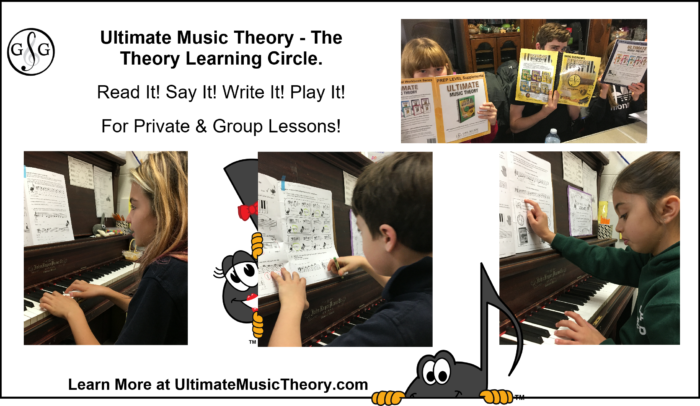
If you are teaching in Group Lessons, take a few minutes of the lesson to go to the piano and have your students play their examples or their exercises. It is fun and can build team spirit and confidence.
In my Theory Group Classes, my students learn:
- EVERYONE makes mistakes, even the Teacher!
- NOTHING HAPPENS when you make a mistake! (The world does not end, the piano does not explode.)
- That we can laugh WITH each other but not AT each other! In my studio, mistakes can be funny, especially when the Teacher - me - makes the same mistake over and over again. (What can I say, sometimes my dyslexia and dyscalculia go into overdrive.)
I hope that this Blog has inspired you to make the Theory Learning Circle a part of your lesson and teaching experience!
Ultimate Music Teachers Membership
♪ LEARN ♪ PLAN ♪ TEACH ♪ GROW
The One & ONLY Ultimate Music Teachers Membership
To Become A UMT PRO!
Your Success Path Starts Here - Go To TeachUMT.com Today!
Keep on Learning... With a Smile and a Song!
Shelagh McKibbon-U'Ren
